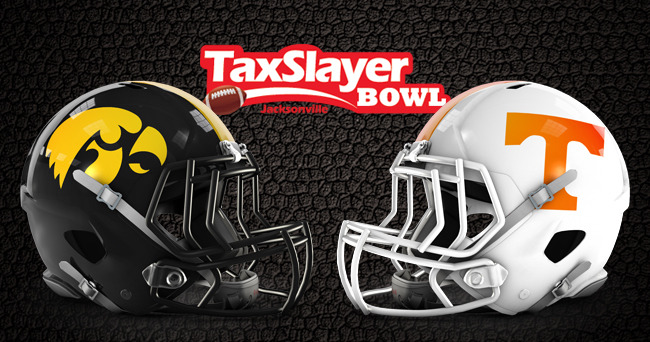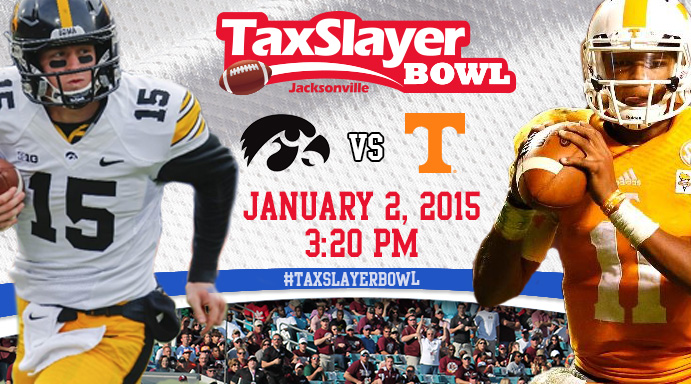- Once known as the Hall of Fame Bowl, Outback Steakhouse took over as the title sponsor of the game in 1996 and since then, the game has matched up teams.
- Super Bowl wins/appearances per division Division Wins NFC East 12 Dallas(5) New York Giants(4) Washington(3) AFC North 8.
- Nebraska boasts one of the richest bowl game traditions in the history of college football. The Huskers appeared in their first bowl game at the 1941 Rose Bowl.

The Rose Bowl Game is an annual American college football bowl game, usually played on January 1 (New Year's Day) at the Rose Bowl stadium in Pasadena, California. [2]. The bowl picture is crystallizing as we enter championship week in college football. Little is certain for Tennessee, though, other than the fact that there will be a.

Rose Bowl Game - Wikipedia, the free encyclopedia"Granddaddy of Them All" redirects here. For the pay- per- view wrestling event, see Wrestle. Mania. Rose Bowl Game. Rose Bowl Game presented by Northwestern Mutual[1]"The Granddaddy of Them All"Stadium. Rose Bowl. Location. Pasadena, California.
Previous stadiums. Tournament Park(1.



Duke Stadium(1. 94. Previous locations. Durham, North Carolina(1. Operated. 19. 02, 1. Conference tie- ins. Big Ten, Pac- 1. 2Previous conference tie- ins.
Pacific Coast. Payout. US$1. 8,0. 00,0. 00 (As of 2. Sponsors. Former names.
Tournament East–West football game (1. Rose Bowl (1. 92.
Rose Bowl presented by AT& T (1. Rose Bowl presented by Play. Station 2 (2. 00. Rose Bowl presented by Citi (2. Rose Bowl presented by Vizio (2. Stanford vs. Iowa (Stanford 4. The Rose Bowl Game is an annual American college footballbowl game, usually played on January 1 (New Year's Day) at the Rose Bowl stadium in Pasadena, California.[2] When New Year's Day falls on a Sunday, the game is played on Monday, January 2 (1.
The Rose Bowl is nicknamed "The Granddaddy of Them All" because it is the oldest bowl game. It was first played in 1. Since 1. 94. 5, it has been the highest attended college football bowl game.[4] It is a part of the Tournament of Roses "America's New Year Celebration," which also includes the historic Tournament of Roses Parade.
Beginning with the 2. Rose Bowl Game presented by Northwestern Mutual". Vizio was the previous sponsor from 2. AT& T, Sony, and Citi. In 2. 01. 5, the game was also officially known as the "College Football Playoff semifinal at the Rose Bowl Game presented by Northwestern Mutual."The Rose Bowl Game has traditionally hosted the conference champions from the Big Ten and Pac- 1. Division I FBS, in 2.
Rose Bowl began to infrequently deviate from its traditional match- up in order to facilitate championship games. In 2. 00. 2 and 2. Bowl Championship Series system, the Rose Bowl was designated as its championship game, and hosted the top two teams determined by the BCS system. Beginning in 2. 01. Rose Bowl has been part of the College Football Playoff system and hosts one of its semi- final games every three years. During non- Playoff years, the Rose Bowl reverts to a Pac- 1.
Big Ten matchup. History[edit]Originally titled the "Tournament East–West football game",[5] the first Rose Bowl was played on January 1, 1. New Year's Day bowl games.
The football game was added in 1. Rose Parade.[6] The inaugural game featured Fielding H. Yost's dominating 1. Michigan team, representing the East, which crushed a previously 3- 1- 2 team from Stanford University, representing the West, by a score of 4. Stanford quit in the third quarter. Michigan finished the season 1. Yost had been Stanford's coach the previous year.
The game was so lopsided that for the next 1. Tournament of Roses officials ran chariot races, ostrich races, and other various events instead of football.[7] But, on New Year's Day 1. The State College of Washington (now Washington State University) defeated Brown University in the first annual Rose Bowl with that explicit name. Tournament Park and Rose Bowl stadium[edit]Before the Rose Bowl was built for the January 1, 1. Pasadena's Tournament Park, approximately three miles southeast of the current Rose Bowl stadium near the campus of Caltech. Tournament Park was determined to be unsuitable for the larger and larger crowds gathering to watch the game and a new, permanent home for the game was commissioned.
The Rose Bowl stadium, designed after the Yale Bowl in New Haven, then hosted the first "Rose Bowl" game in 1. The name of the stadium was alternatively "Tournament of Roses Stadium" or "Tournament of Roses Bowl", until the name "Rose Bowl" was settled on before the 1. Rose Bowl game.[8]The stadium seating has been reconfigured several times since its original construction in 1. For many years, the Rose Bowl stadium had the largest football stadium capacity in the United States, eventually being surpassed by Michigan Stadium in 1. The maximum stated seating capacity was 1. Capacity was lowered following the 1.
Rose Bowl. The 2. Rose Bowl game, which was also the BCS championship game, had a crowd of 9. Rose Bowl game between TCU and Wisconsin.[1. As of 2. 01. 2, the Rose Bowl is number seven on the List of American football stadiums by capacity with a current official seating capacity of 9. The Rose Bowl is also the only BCS bowl game that is held in a non- NFL stadium.
Team selection 1. In the game’s early years, except during World War I, the Rose Bowl always pitted a team—not necessarily the conference champion—from the Pacific Coast Conference (PCC), the predecessor of the current Pacific- 1. Conference, against an opponent from the Eastern U. S. During the last two years of World War I, teams from military bases met in the Rose Bowl.
During its history, a number of notable matchups have been made with the top football teams and top coaches of the time. These include the 1. Rose Bowl, featuring Knute Rockne's Notre Dame team, featuring the Four Horsemen, against "Pop" Warner's Stanford team; the 1. Rose Bowl, featuring Alabama Crimson Tide’s win over Washington; and the 1. Rose Bowl, featuring Howard Jones' USC Trojans against Bob Neyland's Tennessee Volunteers.
During this period, there were ten games in which undefeated teams were matched. Durham, North Carolina[edit]After the Japanese attack on Pearl Harbor on December 7, 1. West Coast shipping beginning on December 1.
Japanese attack on the West Coast. The Rose Parade, with a million watchers, and the Rose Bowl, with 9. Japanese. Lieutenant General John L. De. Witt recommended that the Rose Parade and Rose Bowl festivities be canceled.[1. The Rose Bowl committee originally planned to cancel the game. On December 1. 6, 1.
Duke University invited the game and Oregon State to Duke's home stadium in Durham, North Carolina.[1. Big Nine–PCC agreement[edit]During World War II, many college football schools had dropped some conference opponents and instead played football against local military base teams. Many colleges could not even field teams due to the draft and manpower requirements.[1.
After the war was over, demobilization and the G. I. Bill enabled returning servicemen to attend college. The 1. 94. 6 season was the first true post- war college football season with travel restrictions lifted and civilian college opponents returning to schedules. The Big Nine and PCC were of the same accord when it came to treating players as amateurs, as compared to the semi- professional status that the Southern Universities proposed. Also, the Big Nine and PCC both had the same attitudes towards desegregation and allowing African- Americans to play football.[2. Many other universities were still segregated.
None of the Southeastern Conference schools had an African American athlete until 1. The Cotton Bowl, Orange Bowl, and Sugar Bowl would not be integrated until 1. The Big Nine agreed,[when?] after eight years of negotiating over payments, rules, and ticket allocations, to a five- year exclusive deal with the Rose Bowl to send the conference champion to meet the PCC conference champion.[2. UCLA, USC, Minnesota and Illinois all voted against it.[2. Big Ten–AAWU/Pac- 8/1. When the PCC dissolved prior to the 1.
The Tournament of Roses selected from the former members of PCC and invited Washington, the first champion of the newly formed Athletic Association of Western Universities (AAWU), to play Big Ten champion Wisconsin in the 1. Rose Bowl. The Big Ten authorized its members to accept any Rose Bowl invitation at their discretion.
The AAWU signed an agreement with the Rose Bowl that remained in force from the 1. Rose Bowl until the advent of the BCS era in 1. In 1. 96. 2, after Minnesota changed its vote against pursuing a new agreement (resolving a 5–5 voting deadlock which had prevented any new negotiations for years), a Big Ten agreement was finalized, which went into effect with the 1.
Rose Bowl and lasted until the BCS era. While the Big Ten supplied the "East" representative and the PCC, AAWU, or Pac- 8/1. West" representative from the 1.
Rose Bowl to the BCS era, statements about an "exclusive" Rose Bowl agreement existing during this period are not entirely accurate: the Big Ten was not part of any agreement for the 1. The fact that the 1. Big Ten champion, Ohio State, declined the invitation to play in the 1. Rose Bowl (without penalty) is the clearest evidence that this "exclusive agreement" did not exist in these years. The AAWU used "Big Five", "Big Six", and "Pacific- 8" as unofficial nicknames (each reflecting the number of conference members).
It officially adopted the "Pacific- 8" name for the 1. The name changed to "Pacific- 1. Arizona and Arizona State in 1. BCS in 1. 99. 8. The Big Ten Conference retained the same name throughout this period, even though it had eleven members by the start of the BCS era due to the addition of Penn State in 1. Both conferences had a "no repeat" rule in force for a number of years. Under this rule, any team that had appeared in the Rose Bowl game the previous season could not go, even if they were the conference champion.
The notable exceptions to this rule were Washington playing in the 1. Minnesota playing in the 1. The Big Ten abolished this rule in 1. The AAWU/Pac- 8 had abandoned its no- repeat rule by the time Southern California played in four consecutive Rose Bowl games from 1. Both conferences also had "exclusive agreements" with the Rose Bowl game, in the sense that member schools were not allowed to play in any other bowl game. Both conferences abolished this rule before the 1. As a result, Michigan and USC were allowed to play in the 1.
Orange Bowl and the 1. Liberty Bowl, respectively. Bowl Championship Series[edit].
The Rose Bowl with the banners for the Rose Bowl Game (the right scoreboard has been removed during the 2.
 RSS Feed
RSS Feed
